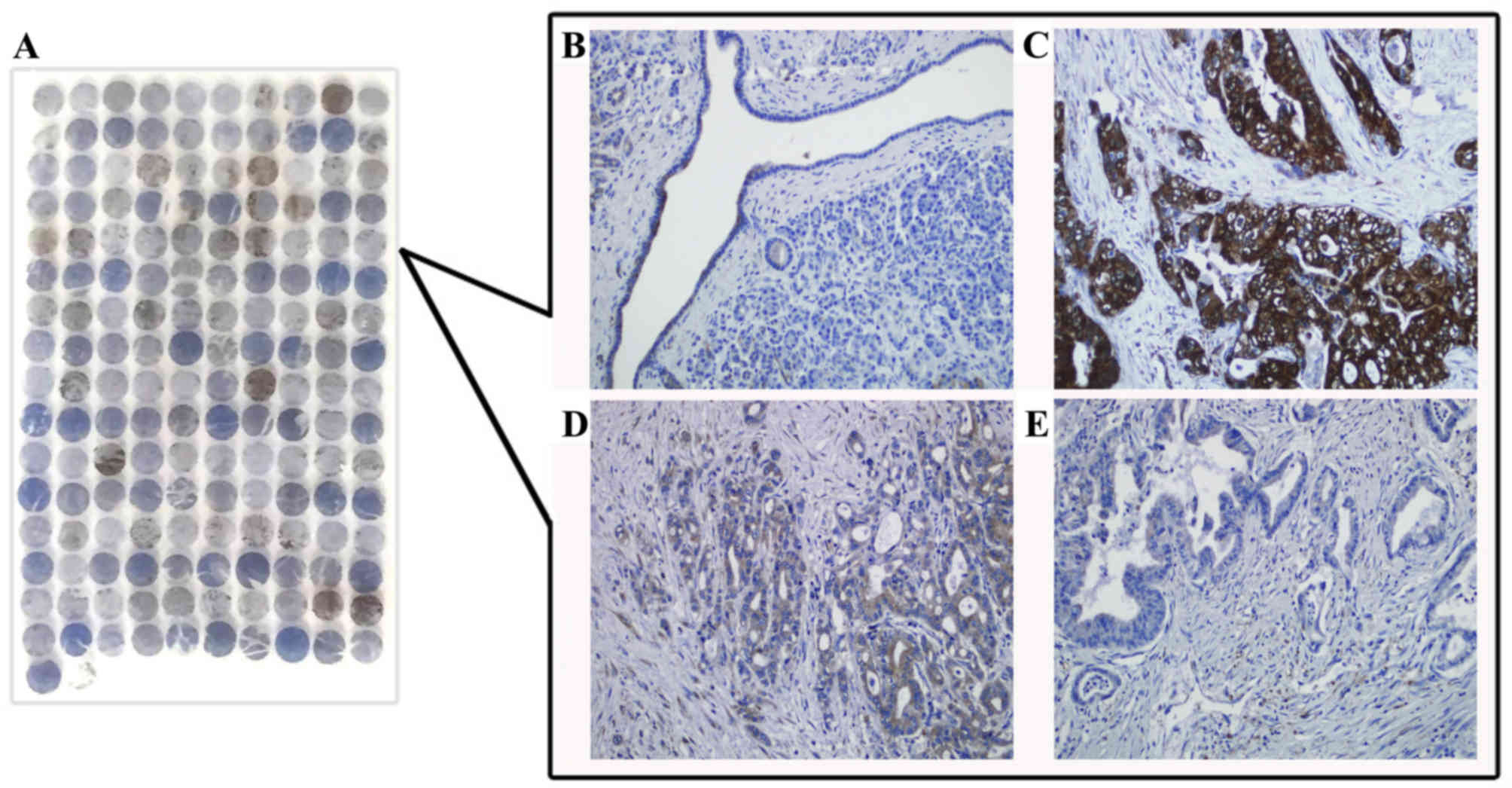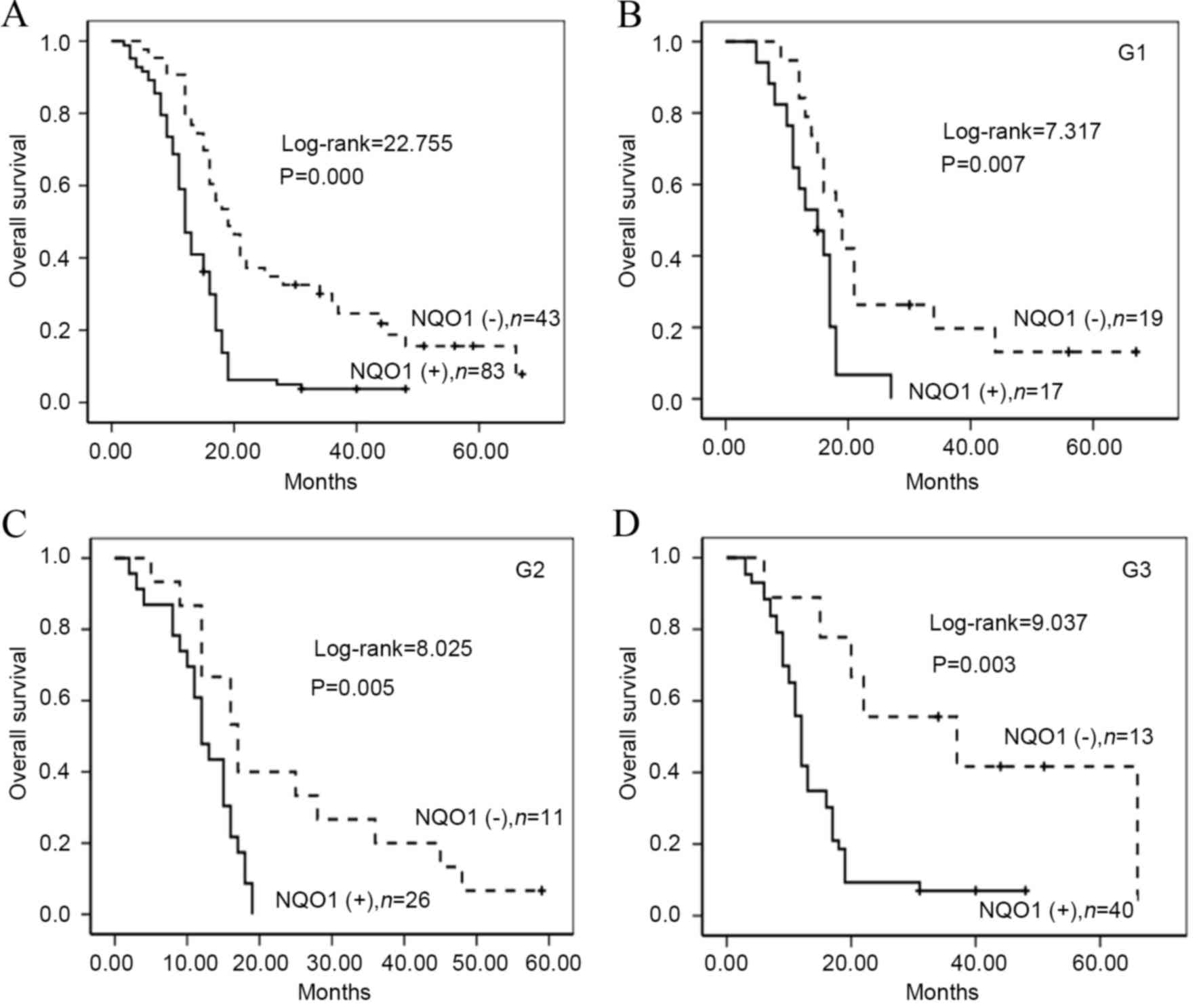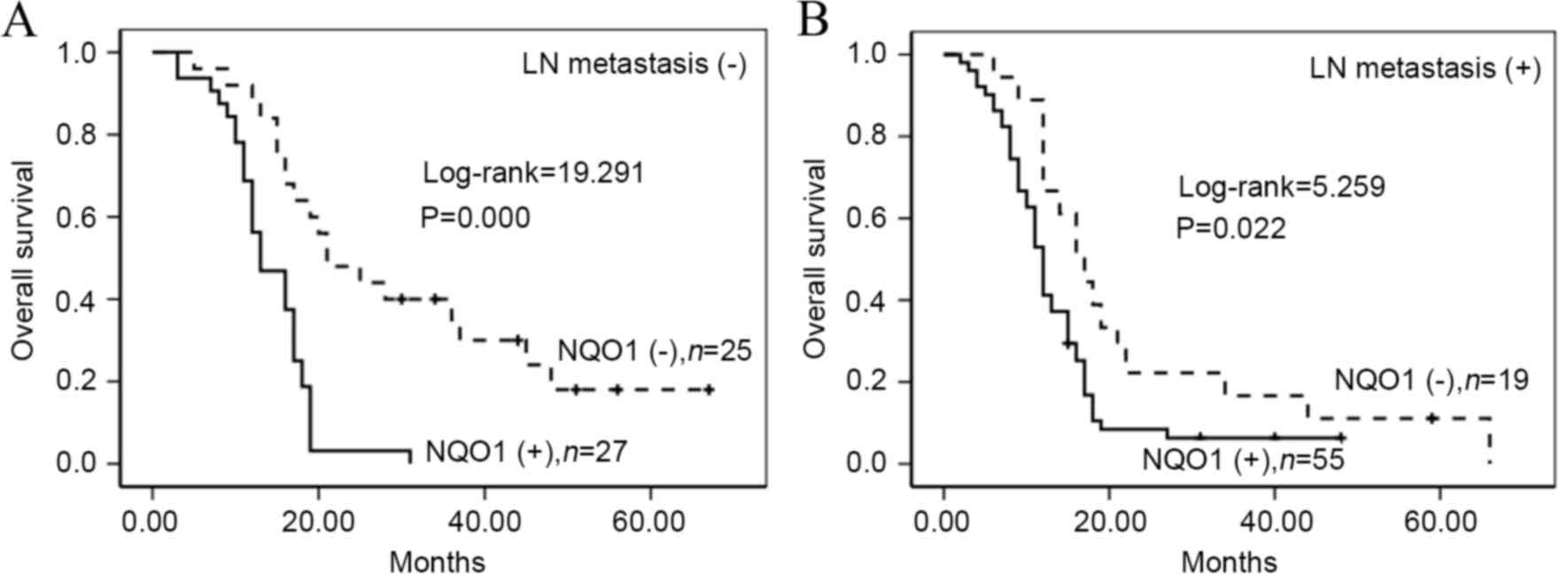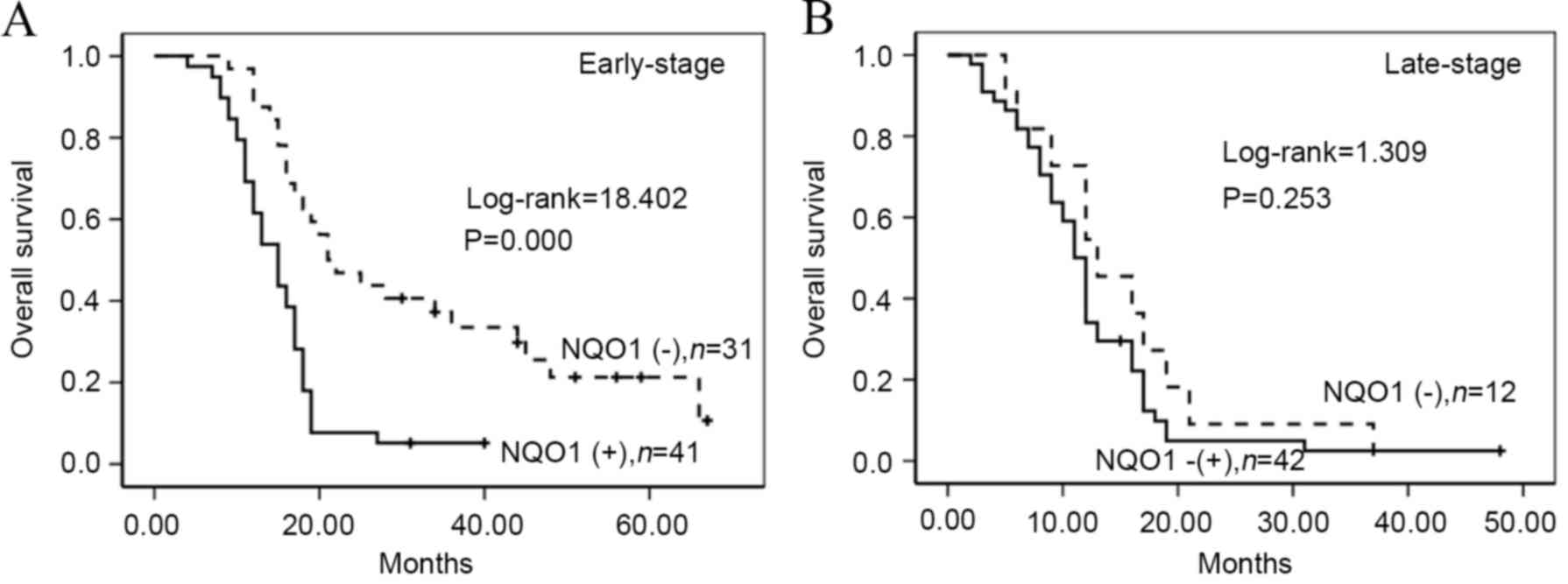|
1
|
Siegel R, Naishadham D and Jemal A: Cancer
statistics, 2013. CA Cancer J Clin. 63:11–30. 2013. View Article : Google Scholar : PubMed/NCBI
|
|
2
|
Michl P and Gress TM: Current concepts and
novel targets in advanced pancreatic cancer. Gut. 62:317–326. 2013.
View Article : Google Scholar : PubMed/NCBI
|
|
3
|
Charpentier M and Martin S: Interplay of
stem cell characteristics, EMT and microtentacles in circulating
breast tumor cells. Cancers (Basel). 5:1545–1565. 2013. View Article : Google Scholar : PubMed/NCBI
|
|
4
|
Cuppone F, Bria E, Vaccaro V, Puglisi F,
Fabi A, Sperduti I, Carlini P, Milella M, Nisticò C, Russillo M, et
al: Magnitude of risks and benefits of the addition of bevacizumab
to chemotherapy for advanced breast cancer patients:
Meta-regression analysis of randomized trials. J Exp Clin Cancer
Res. 30:542011. View Article : Google Scholar : PubMed/NCBI
|
|
5
|
Rosvold EA, McGlynn KA, Lustbader ED and
Buetow KH: Re: Detection of a point mutation in NQO1
(DT-diaphorase) in a patient with colon cancer. J Natl Cancer Inst.
87:1802–1803. 1995. View Article : Google Scholar : PubMed/NCBI
|
|
6
|
Schlager JJ and Powis G: Cytosolic
NAD(P)H: (Quinone-acceptor)oxidoreductase in human normal and tumor
tissue: Effects of cigarette smoking and alcohol. Int J Cancer.
45:403–409. 1990. View Article : Google Scholar : PubMed/NCBI
|
|
7
|
Buranrat B, Prawan A, Kukongviriyapan U,
Kongpetch S and Kukongviriyapan V: Dicoumarol enhances
gemcitabine-induced cytotoxicity in high NQO1-expressing
cholangiocarcinoma cells. World J Gastroenterol. 16:2362–2370.
2010. View Article : Google Scholar : PubMed/NCBI
|
|
8
|
Su XL, Yan MR and Yang L: Qimuge-Suyila:
NQO1 C609T polymorphism correlated to colon cancer risk in farmers
from western region of Inner Mongolia. Chin J Cancer Res.
24:317–322. 2012. View Article : Google Scholar : PubMed/NCBI
|
|
9
|
Siegel D, Franklin WA and Ross D:
Immunohistochemical detection of NAD(P)H: Quinone oxidoreductase in
human lung and lung tumors. Clin Cancer Res. 4:2065–2070.
1998.PubMed/NCBI
|
|
10
|
Siegel D and Ross D: Immunodetection of
NAD(P)H: Quinone oxidoreductase 1 (NQO1) in human tissues. Free
Radic Biol Med. 29:246–253. 2000. View Article : Google Scholar : PubMed/NCBI
|
|
11
|
Sobin L, Gospodarowicz M and Wittekind C:
TNM Classification of Malignant Tumours. 7th. Wiley Blackwell;
Bognor Regis, UK: 2009
|
|
12
|
Edge S, Byrd DR, Compton CC, Fritz AG,
Greene FL and Trotti A: AJCC cancer staging manual. Springer; New
York, NY: 2010
|
|
13
|
Bosman F, Carneiro F, Hruban RH and Theise
ND: Who classification of Tumours of the Digesitive System. IARC
Press; Lyon: 2010
|
|
14
|
Ernster L and Navazio F: Soluble
diaphorase in animal tissues. Acta Chem Scand. 12:595–602. 1958.
View Article : Google Scholar
|
|
15
|
Ross D, Kepa JK, Winski SL, Beall HD,
Anwar A and Siegel D: NAD(P)H: Quinone oxidoreductase 1 (NQO1):
Chemoprotection, bioactivation, gene regulation and genetic
polymorphisms. Chem Biol Interact. 129:77–97. 2000. View Article : Google Scholar : PubMed/NCBI
|
|
16
|
Garate M, Wani AA and Li G: The NAD(P)H:
Quinone oxidoreductase 1 induces cell cycle progression and
proliferation of melanoma cells. Free Radic Biol Med. 48:1601–1609.
2010. View Article : Google Scholar : PubMed/NCBI
|
|
17
|
Iskander K, Li J, Han S, Zheng B and
Jaiswal AK: NQO1 and NQO2 regulation of humoral immunity and
autoimmunity. J Biol Chem. 281:30917–30924. 2006. View Article : Google Scholar : PubMed/NCBI
|
|
18
|
Siegel D, Kepa JK and Ross D: NAD(P)H:
Quinone oxidoreductase 1 (NQO1) localizes to the mitotic spindle in
human cells. PLoS One. 7:e448612012. View Article : Google Scholar : PubMed/NCBI
|
|
19
|
Malkinson AM, Siegel D, Forrest GL, Gazdar
AF, Oie HK, Chan DC, Bunn PA, Mabry M, Dykes DJ, Harrison SD, et
al: Elevated DT-diaphorase activity and messenger RNA content in
human non-small cell lung carcinoma: Relationship to the response
of lung tumor xenografts to mitomycin Cl. Cancer Res. 52:4752–4757.
1992.PubMed/NCBI
|
|
20
|
Cheng Y, Li J, Martinka M and Li G: The
expression of NAD(P)H: Quinone oxidoreductase 1 is increased along
with NF-κB p105/p50 in human cutaneous melanomas. Oncol Rep.
23:973–979. 2010.PubMed/NCBI
|
|
21
|
Li Z, Zhang Y, Jin T, Men J, Lin Z, Qi P,
Piao Y and Yan G: NQO1 protein expression predicts poor prognosis
of non-small cell lung cancers. BMC Cancer. 15:2072015. View Article : Google Scholar : PubMed/NCBI
|
|
22
|
Cui X, Li L, Yan G, Meng K, Lin Z, Nan Y,
Jin G and Li C: High expression of NQO1 is associated with poor
prognosis in serous ovarian carcinoma. BMC cancer. 15:2442015.
View Article : Google Scholar : PubMed/NCBI
|
|
23
|
Lin L, Qin Y, Jin T, Liu S, Zhang S, Shen
X and Lin Z: Significance of NQO1 overexpression for prognostic
evaluation of gastric adenocarcinoma. Exp Mol Pathol. 96:200–205.
2014. View Article : Google Scholar : PubMed/NCBI
|
|
24
|
Mikami K, Naito M, Tomida A, Yamada M,
Sirakusa T and Tsuruo T: DT-diaphorase as a critical determinant of
sensitivity to mitomycin C in human colon and gastric carcinoma
cell lines. Cancer Res. 56:2823–2826. 1996.PubMed/NCBI
|
|
25
|
Buranrat B, Chau-In S, Prawan A, Puapairoj
A, Zeekpudsa P and Kukongviriyapan V: NQO1 expression correlates
with cholangiocarcinoma prognosis. Asian Pac J Cancer Prev.
13:(Suppl). S131–S136. 2012.
|
|
26
|
Kuang HN, Weng TY, Liu YL, Lu KS and Chau
YP: Sulidac compounds facilitate the cytotoxicity of β-lapachone by
up-regulation of NAD(P)H quinone oxidoreductase in human lung
cancer cells. PLoS One. 9:e881222014. View Article : Google Scholar : PubMed/NCBI
|
|
27
|
Park EJ, Min KJ, Lee TJ, Yoo YH, Kim YS
and Kwon TK: β-lapachone induces programmed necrosis through the
RIP1-PARP-AIF-dependent pathway in human hepatocellular carcinoma
SK-Kep1 cells. Cell Death Dis. 5:e12302014. View Article : Google Scholar : PubMed/NCBI
|
|
28
|
Huang X, Dong Y, Bey EA, Kilgore JA, Bair
JS, Li LS, Patel M, Parkinson EI, Wang Y, Williams NS, et al: An
NQO1 substrate with potent antitumor activity that selectively
kills by PARP1-induced programmed necrosis. Cancer Res.
72:3038–3047. 2012. View Article : Google Scholar : PubMed/NCBI
|
















